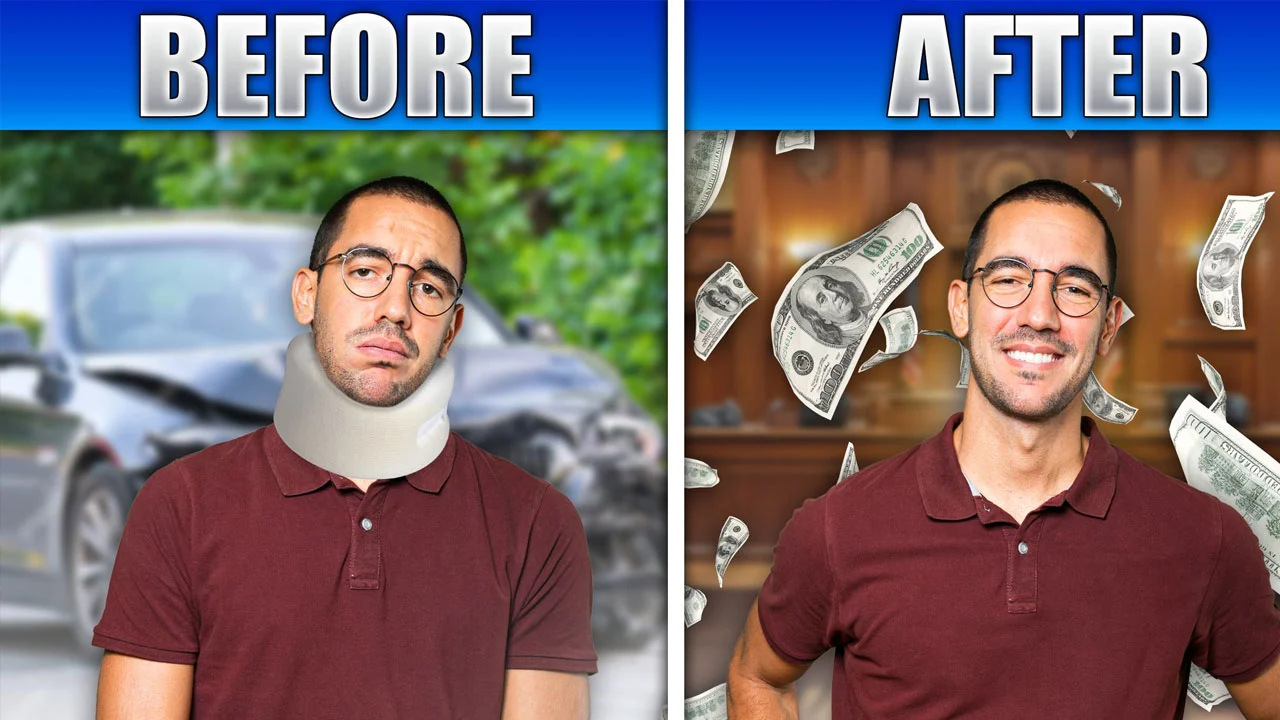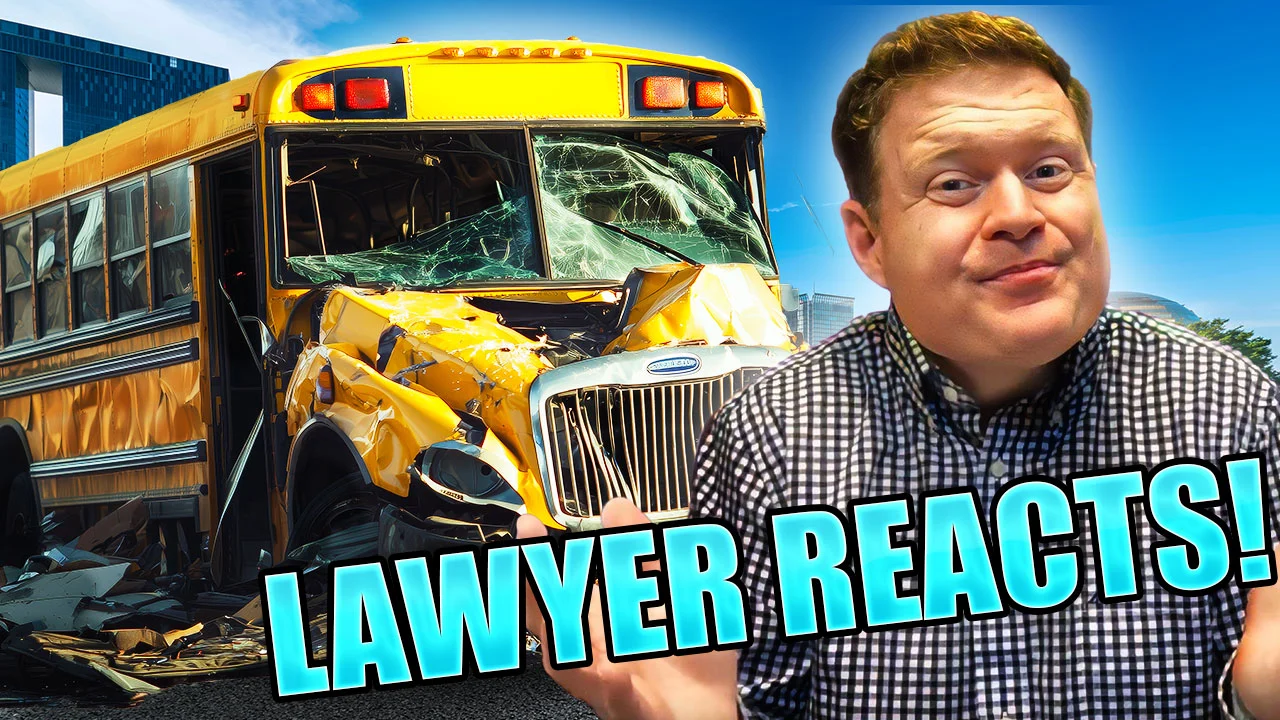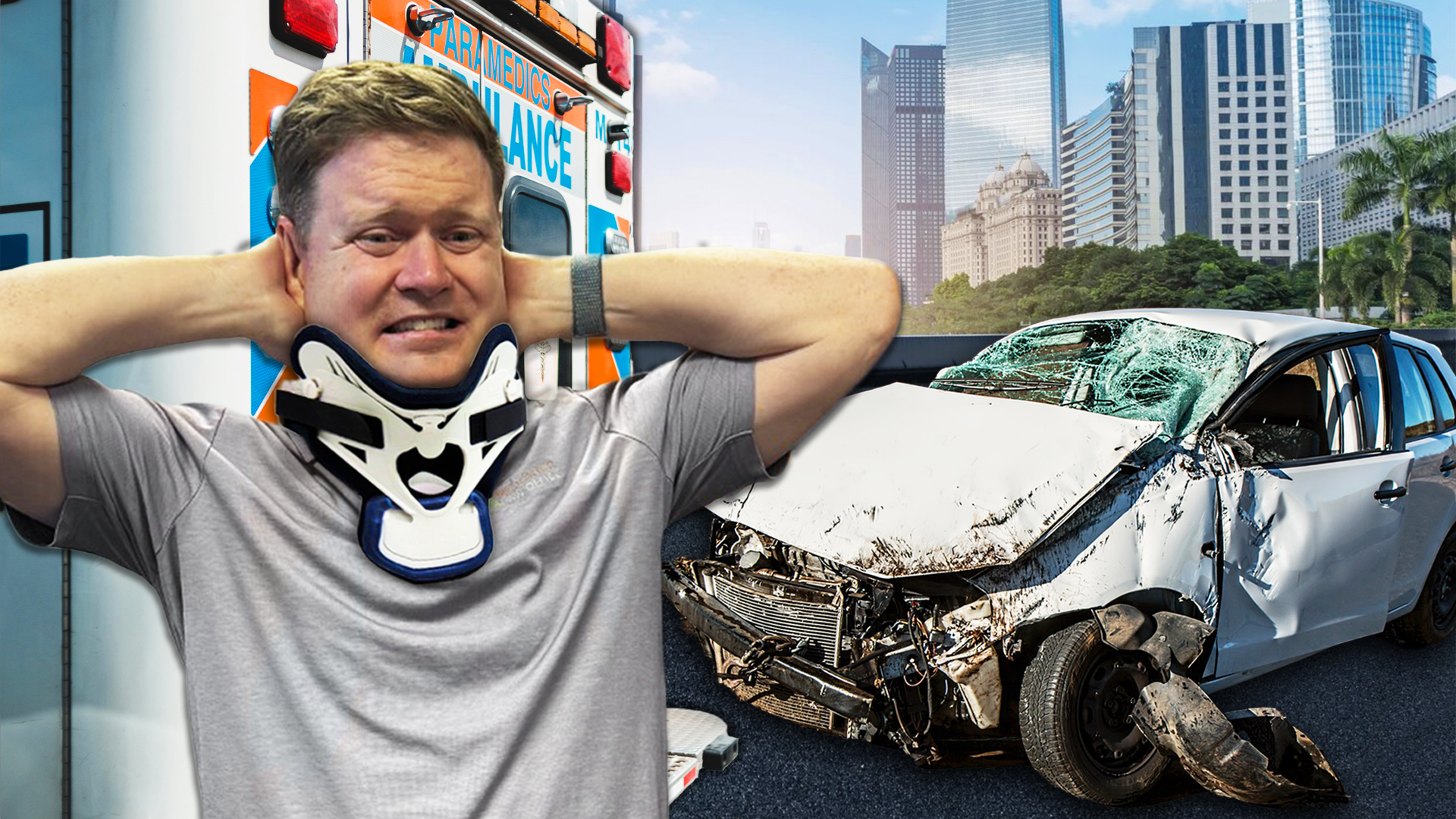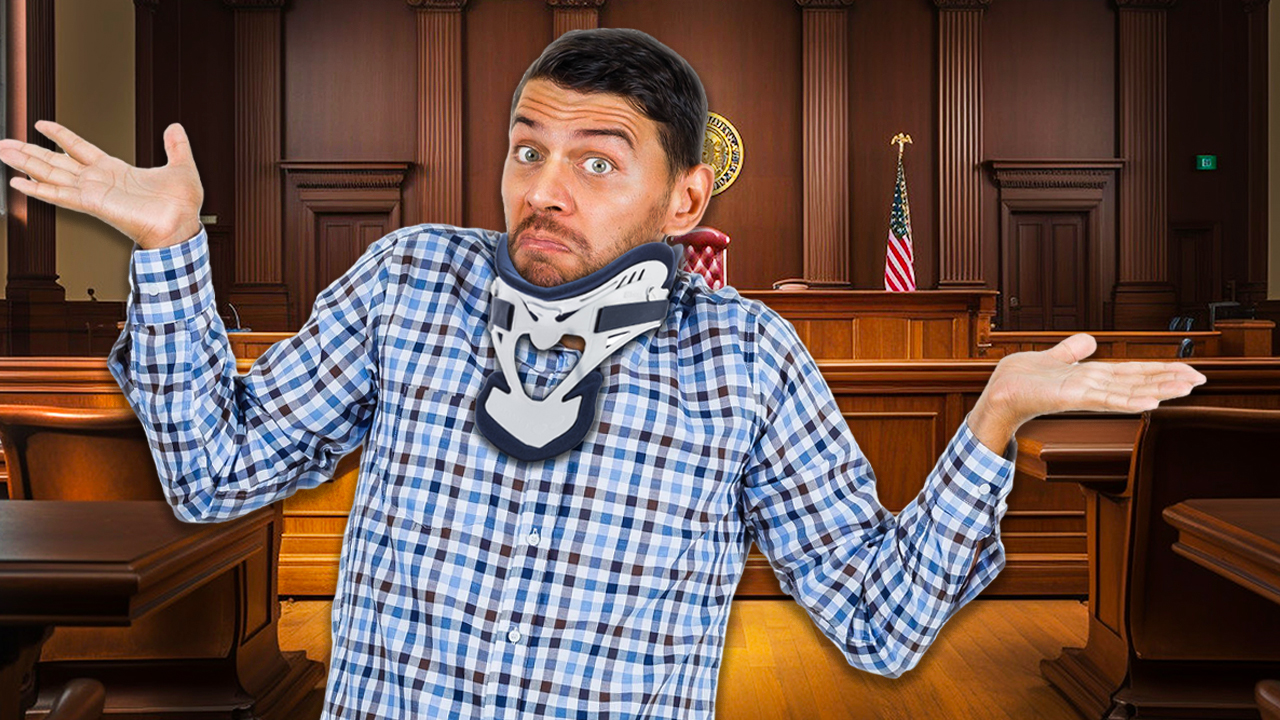- Whiplash injuries following a car accident can be an awful experience. Whiplash is a common injury that can occur when the head is forcefully moved back and forth, often in a car accident like a rear-end car crash. It’s caused by the neck’s muscles, nerves, tendons, and disks being overextended. While some whiplash injuries may get better within a month or two, some whiplash injuries can last several months or years or even be permanent.
- If you have suffered a whiplash injury in a car accident, I would highly recommend you follow the steps in this video.
Step 1: Call the Police
If you have sustained a whiplash injury in a car accident, the first thing you should do is call the police. They’ll make a report that includes your insurance info and the other driver’s insurance and contact information. Stay at the scene and tell the police your side of how the accident happened so it gets included in the report. Make sure to mention that you were hurt and suffered whiplash, so it’s on record. This report can be helpful later when dealing with insurance companies.
Step 2: Contact a Loved One
You should call a friend or family member to come to the accident scene. They can help you, especially if your injuries make it hard to move around or take care of things like talking to the police or taking photos. They can also be there for emotional support, which can make a big difference in a stressful situation like this. Plus, having someone you trust nearby means you have an extra set of eyes to look out for anything important that you might miss.
Step 3: Take Photos
You should take pictures of the accident scene, or ask your friend or family member to do it. Make sure to get shots of the damage to the cars, any road signs, skid marks, and different views of the area. If you have visible injuries like cuts or bruises, take pictures of those too. These photos can be really important later on to show who was at fault and how bad your injuries are.
Step 4: Don’t Admit Fault
One thing you should not do at the scene is say it was your fault. Even if you think you might be to blame, I wouldn’t admit it right away. There could be details you don’t know yet that might show the other driver was also at fault. It’s certainly fine to check on the other driver and everyone else involved to make sure they are okay, but just don’t say it’s your fault right after the accident.
Also, keep in mind that if the other driver is partly responsible, you might still get compensation for your injuries. For example, in Kentucky, where I practice law, both drivers can share blame, and you could still recover damages even if you’re partly at fault.
Step 5: Track Down Witnesses
Don’t forget this step: Look for any witnesses who saw the accident. If their story matches yours, get their name, phone number, and address. Ask them to stay at the scene and give their statement to the police. This could really help your case later on.
Step 6: Call An Ambulance
If you have a whiplash injury, make sure an ambulance is called to take you to the hospital. Taking an ambulance is not only a safe way to get medical help, but it also means your pain and injury will be documented in your medical records right away.
If you decide not to take an ambulance, that’s okay. Just make sure you follow up with this next important step.
Step 7: Get Medical Help
Once I’m released from the hospital, I will start seeing the right doctors to treat my whiplash injuries. Whiplash can lead to serious issues like spinal fractures, herniated or bulging discs, or something called AOMSI.
AOMSI, which stands for Alteration of Motion Segment Integrity, is a serious injury affecting the ligaments that support the spine. It’s often overlooked because many doctors aren’t familiar with it. So it’s important to find a provider who knows how to diagnose AOMSI—make sure to ask your doctor about this injury while you’re getting treated.
Also, it’s really important to keep up with all of your medical appointments. Avoid missing appointments or having long gaps in treatment. Insurance companies might use that against you by arguing that you weren’t seriously hurt or that your treatment wasn’t related to the accident. By attending all your appointments and staying consistent with treatment until you’re done or reach maximum improvement, you make your case much stronger against those arguments.
Step 8: Do Not Give A Recorded Statement To The Other Driver’s Insurer
If the other driver’s insurance company contacts you after your accident, do not agree to give them a recorded statement.
Many insurance companies try to get accident victims to give a recorded statement right after the crash—this is a trap. You aren’t required to give one, and you shouldn’t. The reason they want your statement is to catch you saying something they could use against you later on to weaken your claim in court.
I never allow my clients give a recorded statement to the other driver’s insurance company. It can really only harm your claim, so there’s no point in doing it.
Step 9: Gather Evidence
Once you’ve finished all your treatment or reached the point where you’re as healed as you can be, gather all your medical records and bills related to your accident.
If you had to miss work because of your whiplash injuries, get a form from your employer confirming your pay rate and how much time you missed. You can also collect pay stubs from around the time of the accident, along with your previous and current years’ tax returns.
All of this can be important evidence to help prove any lost wages you’re claiming.
Step 10: Send A Written Demand For The Policy Limits
- After I gathered all the evidence needed, I would then send all the evidence to the insurance company along with a written demand letter or email demanding that the at-fault driver’s insurer pay the policy limits to me. This is a great way to initiate settlement negotiations.
Step 11: File A Lawsuit
- If you are unable to reach a fair settlement agreement, you should then file a lawsuit. Filing a lawsuit is the only good option if the insurance company is lowballing you or has denied your claim.
- The thing now the steps I’ve outlined in this video could help you if you’ve sustained a whiplash injury in a car accident, you may still be a little lost as to what to do next because you really don’t have any idea of the value of what your whiplash injury claim may be worth.
- And if that sounds like you then you should watch this video about to pop up right here where I show you how insurance companies and lawyers go about calculating car accident injury settlements.
- Also, don’t forget to subscribe to my channel right here for more helpful videos like this one.
- Lastly, if you’ve been injured in Kentucky, remember to Don’t Wait, Call Tate!







